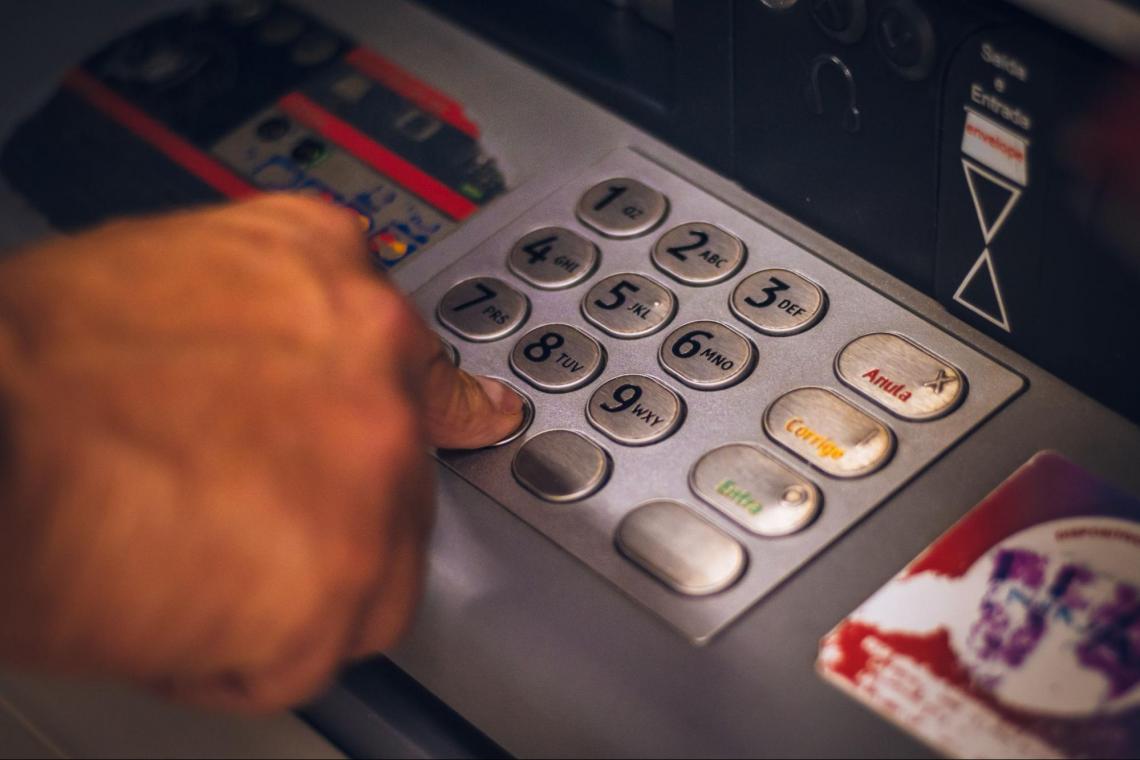Loan
When a bank, credit union, or other institution lends money to an entity or individual, usually with a specified interest rate and repayment date.
A loan is when a bank, credit union, or other institution lends money to an entity or individual. Then, the individual or entity uses it, usually with a specified interest rate and repayment date.

Borrowings are a broad term for loans, discounts, overdrafts, and other outgoing funds. Banks use borrowings to issue concentrated money and monetary funds.
This method can meet the need of society to expand and reproduce extra funds and promote economic development. At the same time, banks can earn interest income from borrowings and increase their accumulation.
A borrowing contract is one in which the borrower borrows money from the lender and repays it with interest at the end of the term. The party who borrows money from the other party is called the borrower, while the party who borrows money is called the lender.
According to the lender, a borrowing contract can be distinguished from a credit contract between a financial institution and a natural person. Both are typical contracts for the transfer of property ownership.
A borrowing contract is one in which the borrower borrows money from the lender and repays the money at maturity with interest.
The borrower is the party who borrows money and can be a natural person, a legal person, or an unincorporated organization. The law does not impose any restrictions on the borrower's qualifications.

The lender is the party who borrows money. It can be a legal person with lending qualifications, i.e., commercial banks, trust and investment companies, and other financial institutions approved by banks and qualified to operate the financial business.
Other civil subjects can also engage in private lending and are also qualified lenders.
Tips on getting a loan
Borrowers need to take a hard look at their situation. Generally, banks will not lend to borrowers who are too old or young. In addition, some non-bank financial institutions will consider you unreliable and unable to pass a borrowing review.
A bank bridge borrowing is usually for a borrower under 22, while too old is defined as over 50. If you encounter too old or too young, you need to have an immediate family member vouch for you to improve the bank's approval rate.
To successfully borrow money, we must carefully select our bank. Currently, banks are highly competitive. To gain more market share, banks adjust their lending rates according to the national range of lending rates.

Therefore, when you need money, you have to compare your borrowing with other banks and choose the one with a low-interest rate.
Many people who need money seem casual when signing bank credit agreements. This rash behavior demonstrates a lack of financial acumen. As a result, they often have to pay more interest on borrowing, resulting in artificially high-interest rates.
This is because some forms of bank borrowing allow people who need money to pay more interest. Examples include borrowings with retained balances and borrowings with interest withheld.
When a borrower receives borrowing from a bank, the bank requires that a portion of the principal amount of the borrowing be deposited into a bank account. This is the borrowing with a retained balance.
This way, the person needing funds is bound to repay the borrowing principal and interest on schedule when the borrowing is due. For those needing funds, discount the principal borrowing amounts to an additional interest payment.
Withholding interest borrowings are credits in which some banks withhold the genuine interest from the borrowing principal at the time of disbursement to ensure timely repayment of the draw.

Since this method reduces the borrowed funds available to the demander of funds, it objectively increases the cost of financing for the demander of funds.
Those in need of money must use it for a long or short period. Therefore, to avoid paying more interest when taking out a bank credit, you should wisely plan the length of the borrowing term.
The longer the credit term, the higher the interest rate will be. This means that the longer the borrowing term grade, the higher the interest rate will be, even if you repay the borrowing on the same day.
If a money-needy person's credit term is seven months, under current borrowing interest accrual rules, only a one-year borrowing rate can be enforced. This invariably increases the interest burden of borrowing for the person in need of funds.
Microfinance companies generally have 3 to 36 months, while banks are, on an annual basis, 1 to 3 years. The mortgage can be done for 10 years.
The banking sector operates in several forms of credit, such as credit, guarantees, mortgages, and pledges. Corresponding to this, banks may vary in the interest rates they apply to borrowings.

For borrowing with the same application period and amount, you may bear more interest expenses if you choose the wrong form of credit.
Therefore, it is essential for those who need money to pay attention to and figure out the interest rate spreads under different credit forms when borrowing from a bank.
For example, the borrowings with the lowest interest rates enforced by banks are bill discounting and pledges. If one's conditions allow, borrowing through these two forms is more than suitable.
Potential Risk
The creation of credit risks often begins at the borrowing review stage. It can be seen from the disputes that occur in comprehensive judicial practice as the dangers that arise at the borrowing review stage mainly happen in the following links.
Bank borrowing reviewers hang one for content omission to cause credit risk. Borrowing review is meticulous work, requiring investigators on the eligibility of the borrowing subject, qualifications, credit, and property status to conduct a systematic examination and investigation.
In practice, some commercial banks need more due diligence, and the borrowing reviewers concerned tend to focus only on the identification of documents while lacking due diligence investigation.

In this way, it becomes difficult to identify fraud in borrowings, which can easily cause credit risks.
Many misjudgments are caused by the bank's failure to seek expert advice on the content in question or by professional judgment.
The process of borrowing review should not only identify the facts but also make professional judgments on the relevant facts in terms of legal and financial aspects. In practice, most of the borrowing review process could be more rigorous and in place.
Borrowers and their principals should also be thoroughly investigated to mitigate the moral risks of the lenders.
Borrowers and their principals should be scrutinized by the financial institutions when granting borrowings, in addition to examining the borrowers' qualifications, conditions, and business status.
The personal qualities of investors and legal representatives and key managers of the enterprise should also be scrutinized and controlled.

The recommendations for credit review carefully examine each borrowing and do not judge the risk of borrowing based on past reviews or credit. The review should not be relaxed or the investigation process shortened simply because the borrower has paid its debts on time in the past.
Establish a system of regular appointments with the borrower's legal representative and key management personnel. The appointment time can be determined according to the size of the borrowing amount and changes in the borrower's production and operation status.
For large borrowing amounts, the appointment cycle should be shortened accordingly.
Professionals such as lawyers or accountants should be hired to make professional judgments for large amounts and long periods of borrowings used by the borrower for specific purposes. In addition, I provide expert advice on related matters.
Forms
An ordinary credit line is a form of borrowing governed by an informal agreement. For example, a business enters into an informal agreement with a bank based on the seasonality and consistency of its capital needs.
The parties agree on a maximum amount that the bank will lend to the business over a given period. Within this period and borrowing amount, the enterprise can obtain a borrowing from the bank at any time.
When applying for credit, the company must explain its financial situation to the bank before borrowing. The bank then decides whether to grant the borrowing and execute the agreement based on the company's creditworthiness and its business requirements.

A standby credit commitment is a form of borrowing that is agreed upon in a more formal and legally binding agreement. For example, the company enters into a legal borrowing agreement with the bank.
In the agreement, the bank commits to lend to the company for a set period and within specified limits. Furthermore, the bank requires the business to pay a commitment fee to the bank.
A working capital credit determines the borrowing term and amount based on product sales progress. This type is based on the characteristics of a long product production cycle, sizeable raw material reserves, and slow return of capital.
Project loans are borrowings for large construction projects with high risks and high costs. It is characterized by large amounts, high risk, and high-interest rates, and the reasonableness and feasibility of the project are used as the basis for deciding whether to lend or not.
Credit debt recovery is directed at the project, not the company or firm. For huge projects, borrowings are usually provided by a combination of banks in the form of a bank syndicate or syndicate to spread the risk.
A credit account is a convenient form of borrowing that banks use mainly for arranging repayment of borrowings in installments. On the other hand, an overdraft account is a convenient form of borrowing for customers who have a current account with the bank.
Process
The borrowing term is the amount of time the user can use the borrowing. During the period, the user can use the borrowed funds for the agreed-upon purpose. When the credit term expires, the user must return the borrowing principal to the bank.

A typical application will go through the following processes:
1. Establishing Credit Relationships
To apply for a bank loan, a business must first apply to establish a credit relationship, at which point the business must apply. Upon receipt of the application submitted by the company, the bank will assign a credit officer to conduct an investigation.
The investigation will mainly include the following:
- The legality of the business operation.
Whether the enterprise has the legal personality required by the relevant conditions.
Enterprises with legal personality should ensure that the approved business scope and the actual scope of business are consistent. - The independence of the enterprise's operation.
Whether the enterprise implements independent economic accounting, calculates profit and loss separately and has independent financial plans and accounting statements. - Whether the enterprise and its production of major products belong to the national industrial policy development sequence.
- The effectiveness of business operations.

- The accuracy of the enterprise accounting accounts and their compliance with relevant regulations; the status and trends of financial results.
- The reasonableness of the enterprise's use of capital.
Whether the enterprise will separate working capital and fixed capital and then manage them. Whether the level and structure of the working capital used are reasonable and whether it is squeezed and misappropriated. - Newly built expansion business.
Whether 30% of the working capital required for the expanded capacity component has been raised, if there is a temporary shortfall, is there a plan to make up for it in the short term?
2. Submit the application
Companies with established credit relationships can apply for bank loans based on reasonable working capital needs in production and operation. The application letter must be submitted when using it for credit.
The bank carefully examines the enterprise's credit application according to the national industrial policy, credit policy, and relevant system, combined with the credit scale plan and credit fund source approved by the superior bank.
3. Loan Review

The main elements of the review are:
- Direct use of the loan.
In line with the scope of industrial enterprises, working capital credit support for direct use is reasonable to purchase goods to pay for goods, the commitment of bills payable, prepayment approved by the bank, etc. - Business operations.
Mainly including material purchase, consumption, storage, product supply, production, sales, liquidity level and structure, creditworthiness, and economic efficiency. - Enterprise tapping plan, working capital turnover acceleration plan, and the implementation of the working capital supplement plan.
- Enterprise development prospect.
Mainly refers to the development prospect of the industry to which the enterprise belongs, the development direction of the enterprise, the upper important product structure, the life cycle, and new product development ability and innovation ability. - Enterprise debt capacity.
Mainly refers to the actual amount of the enterprise's own liquidity and current assets and liabilities, generally available own liquidity to total liquidity ratio, and enterprise current assets and liabilities ratio two indicators analysis.
4. Signing a loan contract
This contract is an economic contract in which the lender delivers a certain amount of money to the borrower for an agreed purpose, and the borrower repays the principal and interest at maturity.
The borrowing contract has its own characteristics; the subject of the contract is money, the lender is usually a national bank or other financial organization, the interest rate of the borrowing is set by the state, and the parties cannot freely agree on it.
The parties agree upon the main terms of the credit contract after consultation by the law. The credit contract is signed after the borrower applies, and the lender examines and approves it.

5. Issuance of bank loans
After the enterprise application for borrowing is examined and approved, the two parties should sign the credit contract according to the type of borrowing.
When signing the contract, attention should be paid to the accuracy of the items filled in; the text should be clear and neat, with no alteration. The official seal of the borrower, the lender and the insurer, and the legal representative's signature are complete and correct.
The borrower establishes the IOU. IOU is a written proof of borrowing that can be signed simultaneously with the credit contract, but also in the amount of the contract and the effective time, a time, or sub-contract.
The bank manager should carefully examine and check whether the credit application's contents are correct and consistent with the loan contract.
FAQs
There are 2 types of government credits: direct borrowings and guaranteed borrowings.
Direct borrowings allow you to borrow money directly from a government agency. All payments on the borrowing will be used to repay the government.
Guaranteed borrowing means an individual can borrow money from a private lender approved by the government.
It is called free borrowing because there is no interest charged on the borrowing, there is no origination fee, and the cost of borrowing the money will be kept as low as possible. However, the borrowing still needs to be repaid.




or Want to Sign up with your social account?